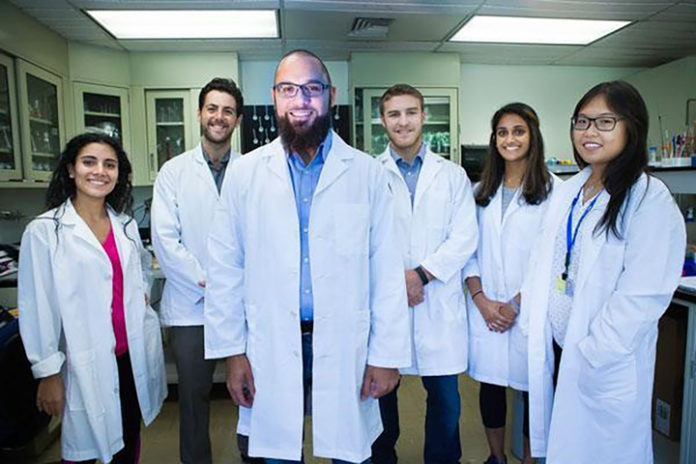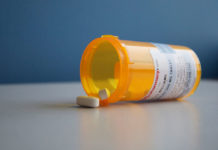
The National Institutes of Health (NIH) recently awarded microbiologist Luis Martinez, Ph.D., a three-year grant of $431,700 to research the impacts of methamphetamines on wounds.
Martinez is an associate professor of biomedical sciences at the New York Institute of Technology (NYIT), who was initially interested in studying the relationship between methamphetamine and pulmonary bacterial infections, but while vacationing in Southern California he became increasingly interested in the effects of methamphetamine on skin lesions instead.
“I was on vacation with my family, and we got lost in a bad part of Fresno,” Martinez said. “We stopped for food and watched a couple that showed signs of meth use, including lesions on their skin from picking and meth mouth. They had rotten teeth and were buying a lot of soda, which is typical among meth users who sweat a lot, but the lesions specifically caught my eyes. I did research on that and did not find any specific information about the biology of the lesions.”
Nearly every toxic substance is linked to dermatological problems. Methamphetamines are particularly notorious for triggering a sensation that feels like insects crawling over the skin and picking of the skin, which often leads to the fast formation of severe wounds and/or ulcers. Meth is also associated with an overall weakened immunological system but, Martinez said, there’s still a lack of scientific information on the challenges meth users have while healing.

“You can say meth users have poor hygiene and scratch their lesions, of course, they’ll be infected by bacteria,” he said. “But what’s actually going on in those lesions? I want to understand what makes those wounds not heal, in addition to the fact they are scratched.”
Martinez gathered a group of NYIT students and scientists from Rutgers New Jersey Medical School, Albert Einstein College of Medicine and George Washington University to collaborate with him. The team just finished polishing a scientific paper showing that methamphetamines enhance the general proliferation of bacteria. Now, Martinez’s team is focusing on the inflammatory properties of meth and its link to a particular protein gene called IL-6.
“In addition to inflammation, we’re focused on how meth causes the overproduction of IL-6, which is a high-inflammatory and induces a high immune response when present in a lesion,” he said. “We recently started doing investigations, and it seems to me that based on the preliminary data we have, particularly with IL-6, that IL-6 is the regulator of the lesions seen in these patients. So, our goal is to see how we can decrease the amount of that specific cytokine and enhance the healing.”
The team will analyze meth’s impact on white blood cells, which are imperative in the wound healing process. They’ll then use images of wounds of meth-injected mice to see how these cells respond as well as… (continue reading)















